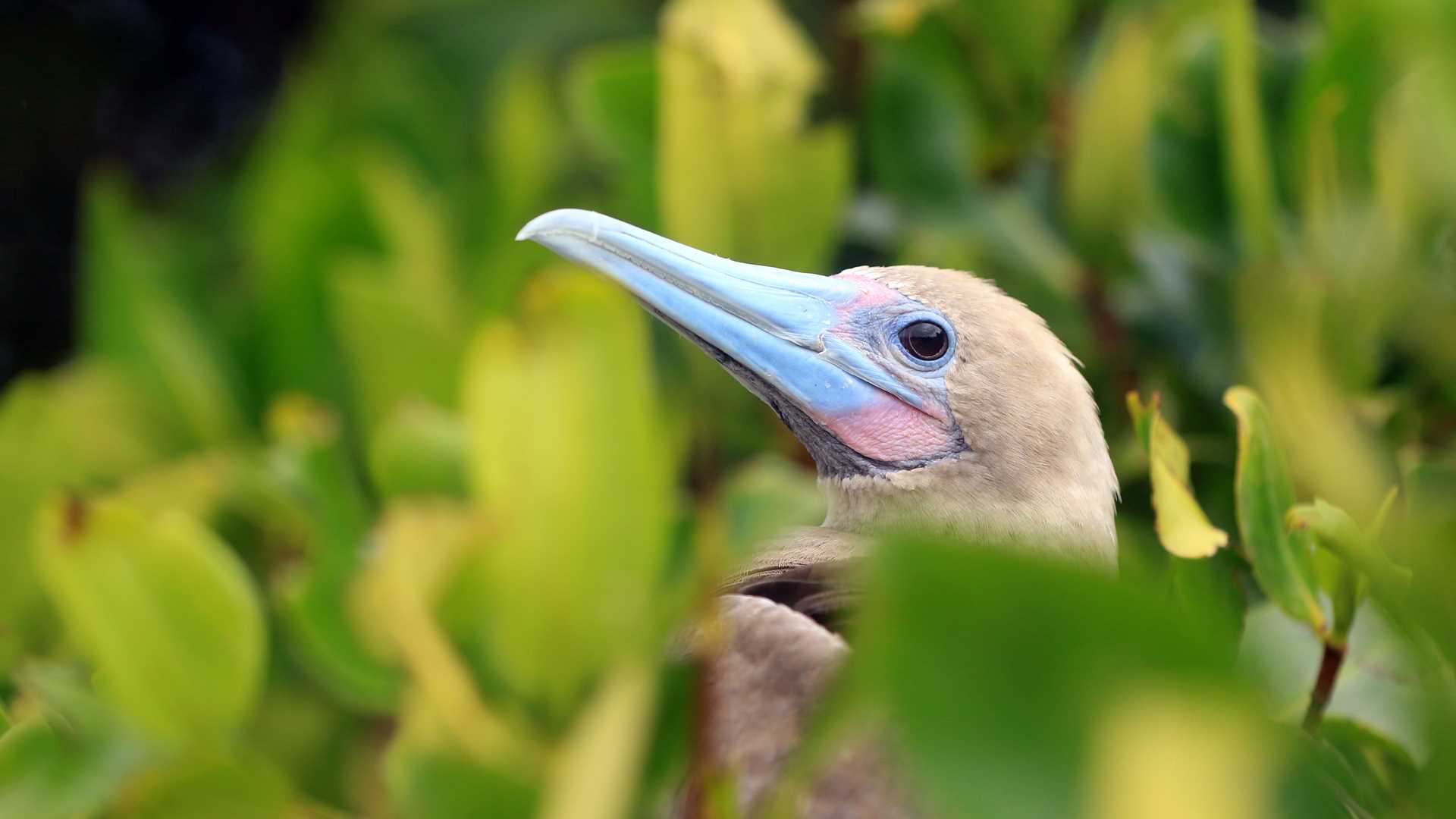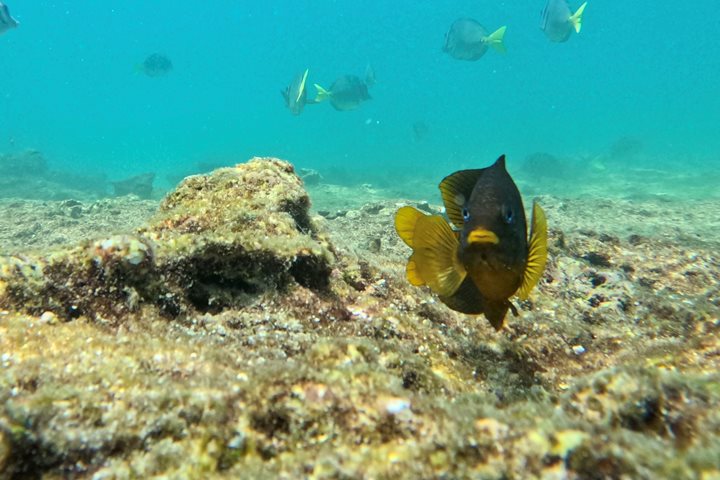Genovesa is one of the most beautiful islands in the Galapagos. It is home to over a million birds. The island is the remains of an old shield volcano. Successive lava flows slowly built up a long, flat crater until one side of the caldera collapsed. This let in seawater, forming a protected bay surrounded by the crater walls of the submerged volcano. The calm waters inside the caldera are excellent for snorkeling or kayaking. The cliff walls provide nesting sites for seabirds, and two trails invite guests to walk through huge colonies of red-footed boobies and frigates.
After a long navigation from the central part of the archipelago, we arrived at Genovesa. With the first beams of sunlight, we gathered on the outer decks to observe hundreds of seabirds flying above us. We identified red-footed boobies, frigatebirds, seagulls, red-billed tropicbirds, and Nazca boobies.
After breakfast, we disembarked at Darwin Bay. A beautiful white sand beach was covered with red mangroves. The trees were occupied by red-footed boobies and frigatebirds, while swallow-tailed gulls and Nazca boobies covered the beach, all in different stages of their nesting cycle. We had seen frigatebirds in flight, but today we were able to see them closer. Walking along the beach, we had the opportunity to see a new variety of prickly-pear cactus. Featuring spines as soft as hair, this cactus evolved without predators such as land reptiles.
We returned to National Geographic Islander II to prepare for the next outing. Some of our guests enjoyed the rest of the morning on the beach, while snorkelers left Darwin Bay to go swimming along the caldera. They observed so much marine life, including trumpetfish, Moorish idols, playful sea lions, pompanos, and whitetip reef sharks.
After lunch, we took a hike in the magical world hidden by Prince Philip’s Steps. Since the beginning of our visit, seabirds have delighted us and kept us on the lookout. Nazca boobies and their chicks were just another marvel that Mother Nature showed us today. When we reached the other side of the cliff, over the open lava flow, we started to look for the mainland predator of this island, the short-eared owl. We found evidence of its presence in the area: prey carcasses and regurgitated pellets made up of the feathers and bones of storm petrels. We went straight to a cliff where hundreds of those petrels nest. What better place to start our search? We met with success. We spotted three owls from a distance.
Just before sunset, we went back on board to behold the sunset coloring the walls of the caldera. We remembered the incredible creatures we saw. They will be part of our memories forever.







